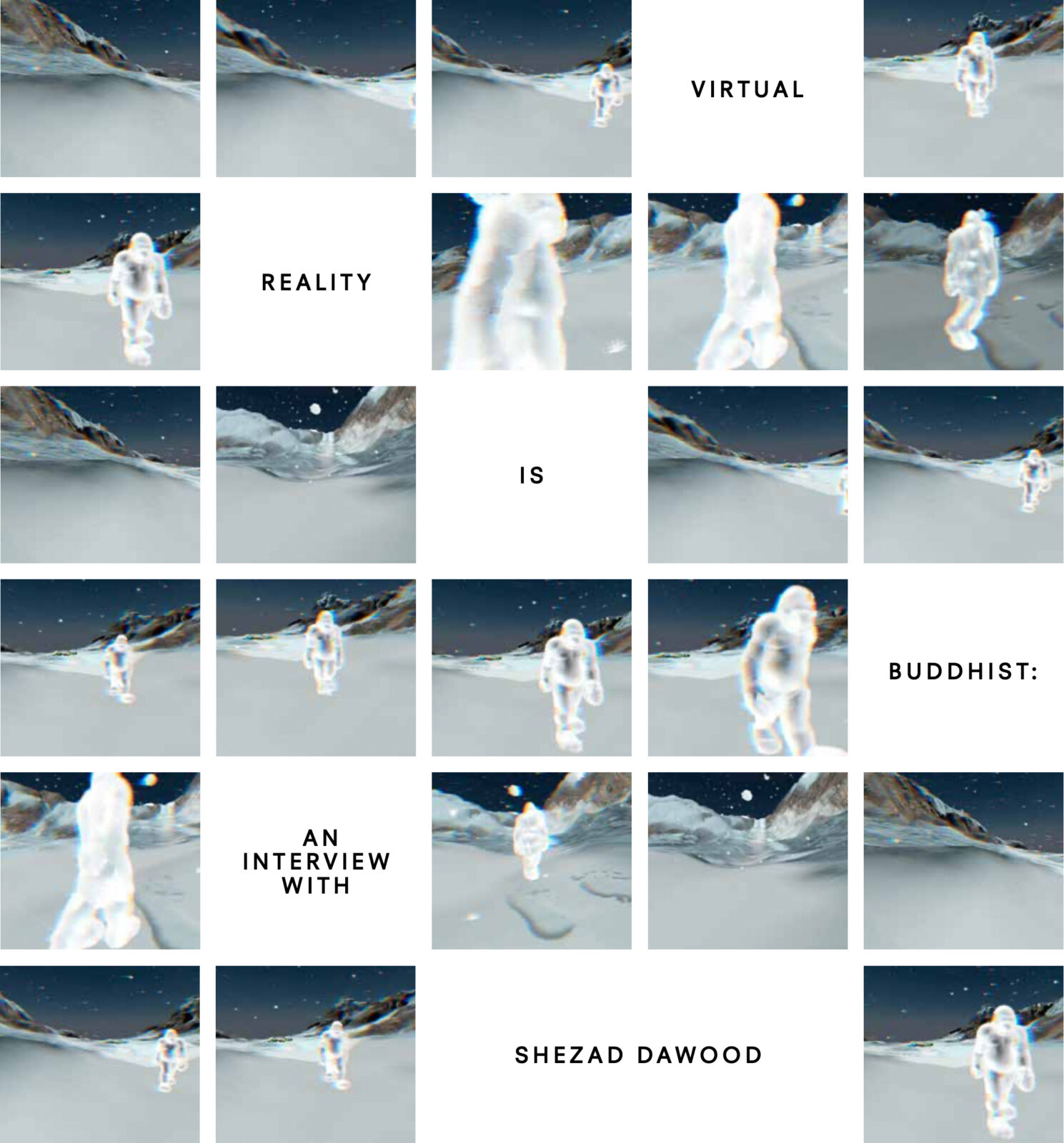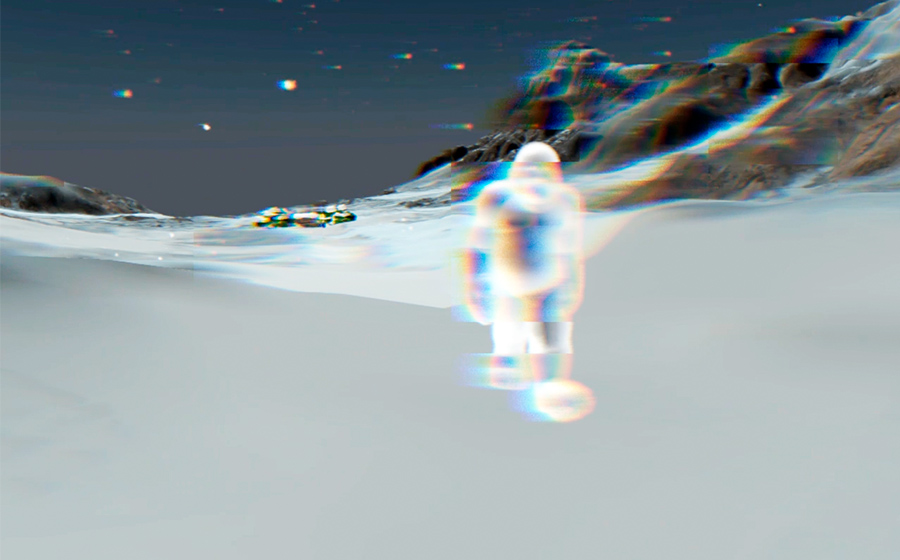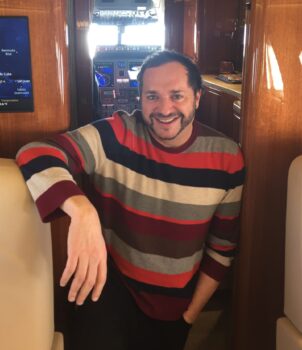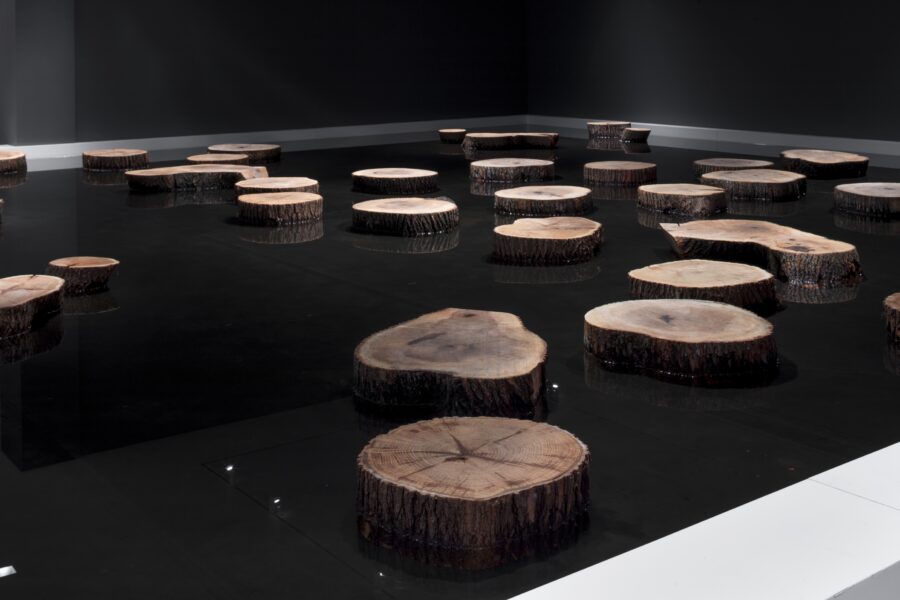
Shezad Dawood (b. 1974, London); Kalimpong (stills); 2016; virtual reality; © Shezad Dawood; Courtesy of Timothy Taylor, London/New York

Shezad Dawood (b. 1974, London); Kalimpong (stills); 2016; virtual reality; © Shezad Dawood; Courtesy of Timothy Taylor, London/New York
Shezad Dawood’s virtual reality work Kalimpong layers ideas and media linking Buddhism, technology, art, and historical and speculative narratives.
Shezad Dawood: I first learned of Kalimpong as a teenager reading Alexandra David-Néel’s Magic and Mystery in Tibet (1929). There she describes meeting the Thirteenth Dalai Lama on the outskirts of Kalimpong in April 1912. David-Néel also wrote about meeting naljorpas, reclusive monk sorcerers in the caves above the city. I didn’t come back to Kalimpong until I was in my thirties and came across the story of Tom Slick—one of my favorite rabbit holes—a Texas oil millionaire who had a passion for cryptozoology, which is the search for mysterious, speculative animals. He funded three expeditions in the mountains above Kalimpong in search of the Yeti.
I have a few friends who are (somewhat) maverick coders and developers, and they had been encouraging me for a few years to experiment more and more with the form. I had been waiting for the technology to get to where I wanted it to go, and for the right story idea to present itself. Kalimpong became the perfect first vehicle to present my work in VR more publicly. And given the whole backdrop of Esoteric Buddhism to the narrative and geography of Kalimpong, this became a great philosophical point of entry to discuss the whole nature of reality and illusion. In a certain fashion Esoteric Buddhism has been talking about virtual reality for over a thousand years.
The idea of a link between Esoteric Buddhism and VR is mind-blowing.
Time is Vedic: time is circles stacked upon one another—all time is one. We have this Vedic notion in terms of simultaneity that all times coexist. Rather than past, present, and future, they are set one upon the other. The Vedic scriptures anticipate the virtual technology of the past five to ten years. Buddhism and Hinduism talk about illusion, reality being a projection hologram—what might be interpreted in contemporary terms as a hologram. Philosophically the idea of virtual reality is not new, but mechanically . . . we’re still working through the clunkiness of VR and figuring out what context is best realized through this medium.

Shezad Dawood (b. 1974, London); Kalimpong (stills); 2016; virtual reality; © Shezad Dawood; Courtesy of Timothy Taylor, London/New York
Well in some ways it’s quite pragmatic. For example, I’m interested in foreign interests conspiring with and against each other in the Himalayas, from the Russians and the British as part of the nineteenth-century Great Game and, later, the Japanese. Then in the post-Second World War period, I’m interested in the coalescing of postcolonialism and the Cold War, with competing interests from China, India, and the United States playing out their intrigues, all of which continue to feed into the present, in terms of governments putting on their masquerades, while still competing for resources and trade routes in the way they have been doing for millennia. It is these quite factual loops I’m also interested in, as they provide clues for the future to anticipate the past.
It was very kind of the Rubin to allow me access to the collection in the development of the work, and of course Padmasambhava is the key to understanding what the work sets out to do. It is really speaking to an idea of collapsing various times and narratives, and in so doing questioning the whole construct of what one might term the “real,” particularly the cognitive structure of linear time we use to make sense of it.
It’s very structural. This idea of consonant layers and ideas that can coincide and interface is very much how I start to think of depth: whether that’s in painting, where I see it almost as a series of planes or rectangles that emerge out of a painting and at the viewer, or in film, where I see them line up as frames that cut and dissolve into one another.
I’m interested in sculpting sound and how you can create an added level of immersion. I work with Rupert Clervaux, and we were both kind of dumbstruck—for all our experiments in nondurational sound, there was still a linearity. In VR, however, without a fixed beginning, middle, and end, you have no control over how long a viewer will stay in one section of the scene. What does that do to a sound design? A kind of space that bleeds through time. You are trying to avoid at all costs a repetition where the sound loop breaks on itself.
Ha! The question. I very much thought of the bodiless state of the bardo when conceiving Kalimpong and in a way, we are returning here to Padmasambhava, to whom the Bardo Thodol, or Tibetan Book of the Dead, is often attributed. It is interesting that Padmasambhava was also responsible for bringing Buddhism from India to Tibet, given the more recent roles played out between India and Tibet, such as India’s hosting of the Dalai Lama. And to go back to the bardo, I ended up structuring the whole VR experience around the three stages and six states of the bardo that occur between waking life and rebirth. I really wanted the audience to have an experience of that in some small way, while also getting sucked into some of the subplots woven in there, including a history of Himalayan textiles, artifacts, and glitches borrowed from a short history of video and new media art practice in the 1970s, and Tom Slick’s yeti expeditions. But that’s another tale . . .
Kalimpong by Shezad Dawood was part of the Rubin Museum’s exhibition A Lost Future, which ran from February 23, 2018, to May 21, 2018.

Shezad Dawood works across film, painting, and sculpture to juxtapose discrete systems of image, language, site, and narrative, using the editing process as a method to explore meanings and forms. Dawood trained at Central St Martins and the Royal College of Art before undertaking a PhD at Leeds Metropolitan University. He is a research fellow in experimental media at the University of Westminster.

Howard Kaplan is an editor and writer who helped found Spiral magazine in 2017. He currently works at the Smithsonian and divides his time between Washington, DC, and New York City.

Rubin Museum
150 W. 17th St., NYC
Get the latest news and stories from the Rubin, plus occasional information on how to support our work.